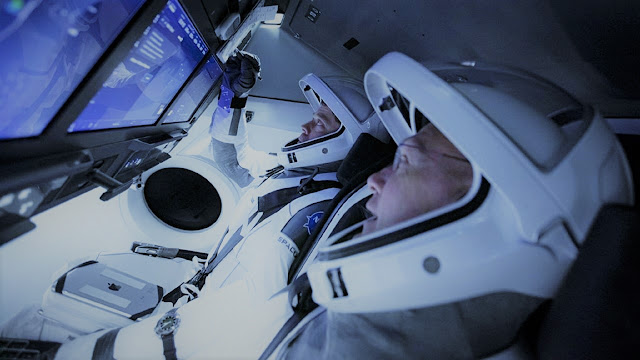A blink to control the mobile phone could simplify our routine, and would change forever the quality of life of people with different disabilities. The mind computing is changing the way we interact with tech. Today it allows users to control external devices with their minds and opens up enormous possibilities for inclusion.
Decoding mind waves to read minds has been the field of work for years for Ana Matrán-Fernández, a young researcher who has focused much of her career on improving the quality of life of people with disabilities through scientific breakthroughs.
The assistive tech used by Matrán-Fernández involves mind-computer interfaces (BCI) that allow people to control something external, such as a computer or a wheelchair. According to the researcher from the University of Essex, the technique consists of placing electrodes on the person's head, to measure electrical activity in the mind.
This allows signals associated with certain thoughts to be converted into commands that make it possible for the person with paralysis to control a device.
"We mount a helmet with electrodes, and that gives us signals. Then we have many algorithms and from there we can extract information. We cannot know what a person is thinking exactly, but we can distinguish from a series of options, what they are trying to do , points out the researcher, who exemplifies: "if you want to go to the right, think about raising your right hand, if you want to go to the left, think about moving your left hand. That kind of thinking is well located in the mind. "
After a year and a half of laboratory tests, Ana Matrán-Fernández encouraged her team to participate in a unique opportunity to test their work outside the door: a Cybathlon.
"Cybathlon is a competition for people with different types of disabilities.People who cannot move at all, or people who have had their limbs amputated." They compete in different disciplines in their corresponding category, in our case we form a group of students, and we worked more than a year with David, a 60-year-old man who had an accident at 30 and became a paraplegic.
"It helps you reevaluate your priorities" said Matrán-Fernández, who on that occasion received a bronze medal with his team.
--------
Jin Hong
Berkeley Newsroom
Decoding mind waves to read minds has been the field of work for years for Ana Matrán-Fernández, a young researcher who has focused much of her career on improving the quality of life of people with disabilities through scientific breakthroughs.
The assistive tech used by Matrán-Fernández involves mind-computer interfaces (BCI) that allow people to control something external, such as a computer or a wheelchair. According to the researcher from the University of Essex, the technique consists of placing electrodes on the person's head, to measure electrical activity in the mind.
This allows signals associated with certain thoughts to be converted into commands that make it possible for the person with paralysis to control a device.
"We mount a helmet with electrodes, and that gives us signals. Then we have many algorithms and from there we can extract information. We cannot know what a person is thinking exactly, but we can distinguish from a series of options, what they are trying to do , points out the researcher, who exemplifies: "if you want to go to the right, think about raising your right hand, if you want to go to the left, think about moving your left hand. That kind of thinking is well located in the mind. "
After a year and a half of laboratory tests, Ana Matrán-Fernández encouraged her team to participate in a unique opportunity to test their work outside the door: a Cybathlon.
"Cybathlon is a competition for people with different types of disabilities.People who cannot move at all, or people who have had their limbs amputated." They compete in different disciplines in their corresponding category, in our case we form a group of students, and we worked more than a year with David, a 60-year-old man who had an accident at 30 and became a paraplegic.
"It helps you reevaluate your priorities" said Matrán-Fernández, who on that occasion received a bronze medal with his team.
--------
Jin Hong
Berkeley Newsroom






